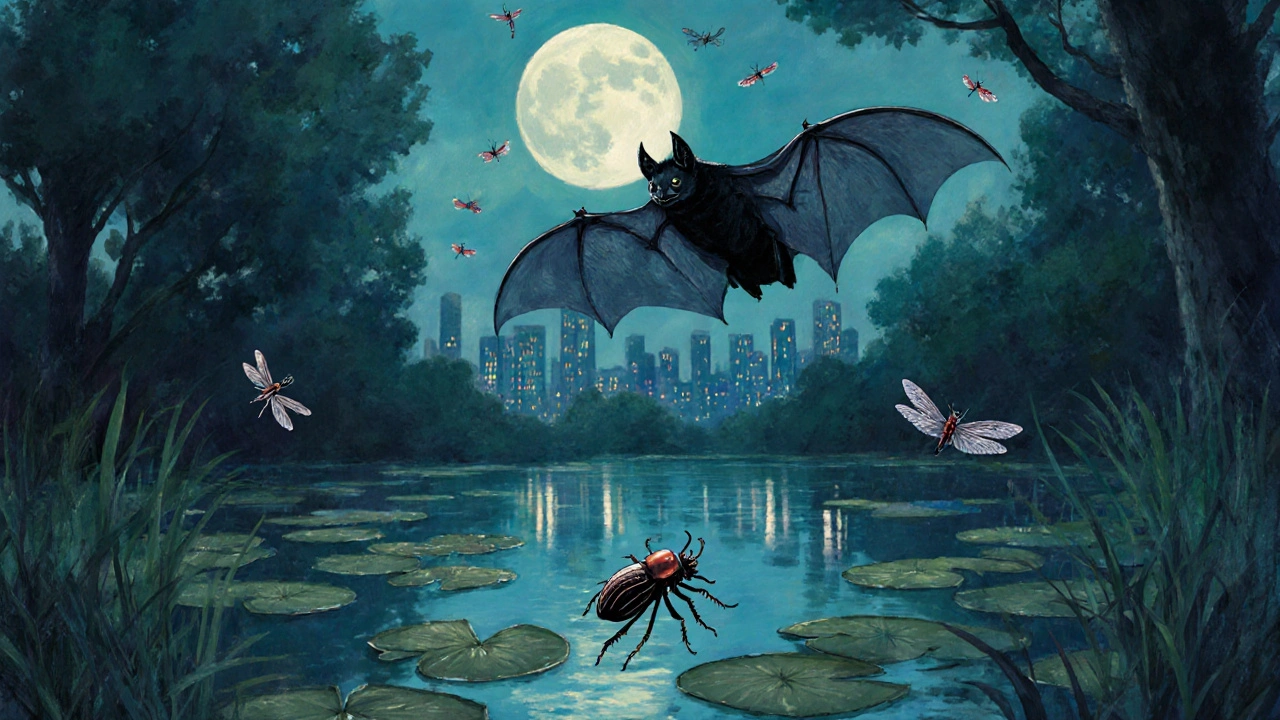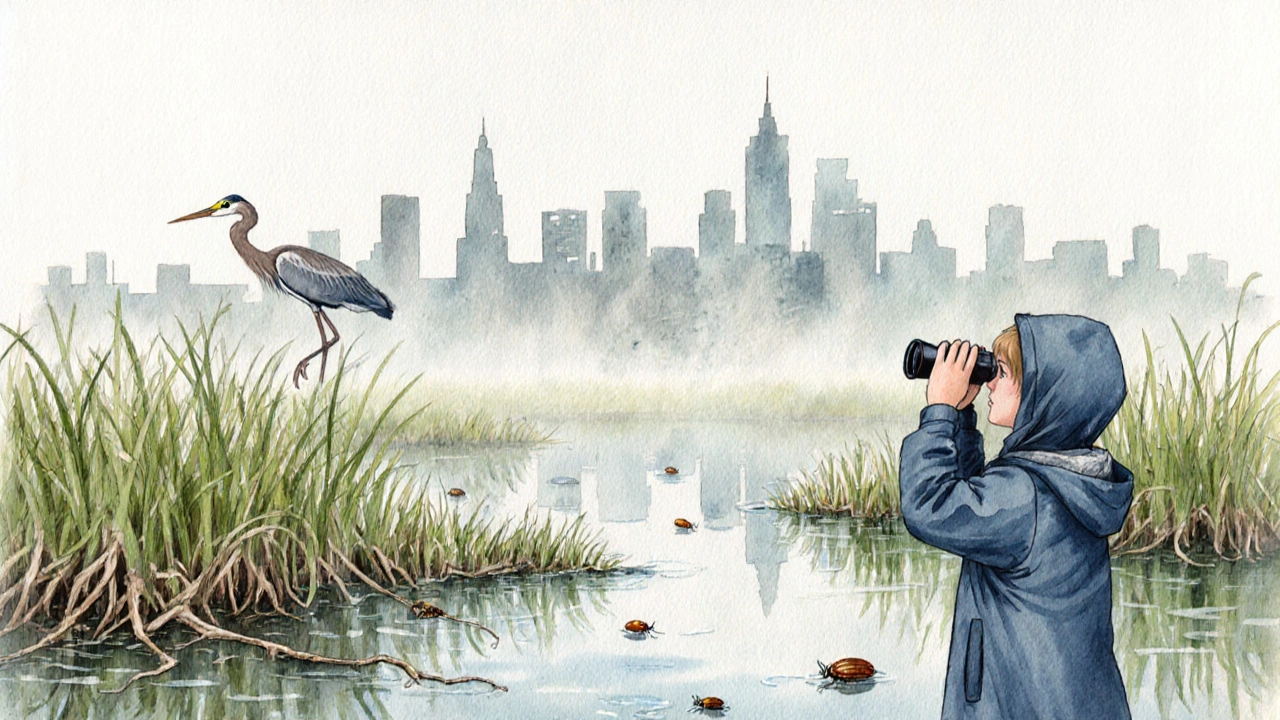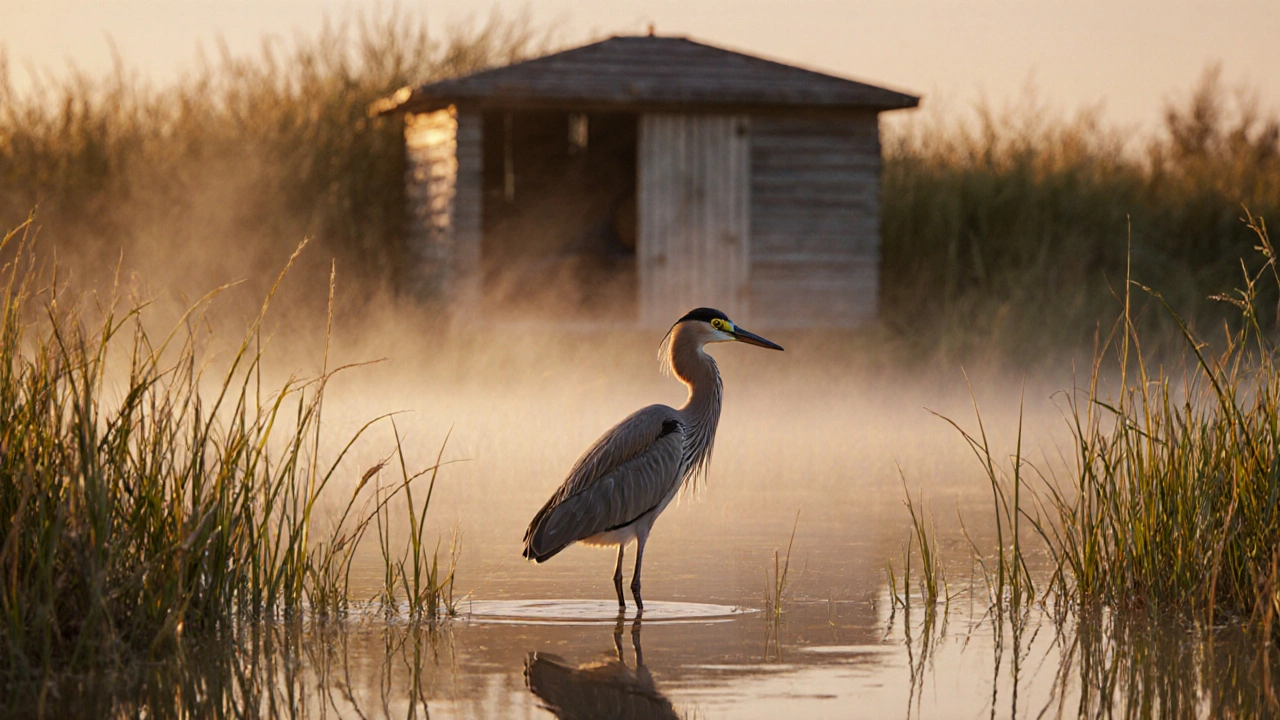London isn’t just concrete and traffic. Beneath the skyline, between the bus routes and housing estates, there are quiet corners where herons stand still in shallow water, otters slip through reeds, and rare beetles crawl under fallen logs. These aren’t remote forests-they’re nature reserves, carefully kept by organizations like the WWT (Wildfowl & Wetlands Trust), and open to anyone who walks through the gates.
What Is WWT, and Why Does It Matter in London?
The WWT (Wildfowl & Wetlands Trust) started in 1946 when naturalist Sir Peter Scott turned a flooded clay pit in Slimbridge into a sanctuary for wild ducks. Today, it runs nine wetland centers across the UK, and one of them-WWT London Wetland Centre-sits right in the heart of Barnes, just 10 miles from Central London.
This isn’t a zoo. It’s a living lab. Over 180 species of birds visit here each year. You’ll see Eurasian bitterns, once nearly extinct in Britain, now breeding here thanks to restored reedbeds. You’ll hear the kingfisher’s sharp whistle as it zips over the water. And in winter, hundreds of teal and shoveler ducks gather by the hundreds.
WWT London Wetland Centre isn’t just about birds. It’s a model for how cities can bring back nature. The site was once a series of disused Victorian reservoirs. Now, it’s 105 acres of ponds, marshes, and meadows, managed to mimic natural processes. Rainwater is filtered through reeds. Insects thrive. Fish spawn. And people? They walk, they watch, they learn.
Urban Wildlife Isn’t Just Birds-It’s Everything
When people think of London wildlife, they picture pigeons and squirrels. But the truth is richer. The city’s green spaces support over 13,000 species. That includes water voles, which were nearly wiped out by invasive American mink but are now making a comeback in the Lea Valley. You won’t see them often-they’re shy, nocturnal, and live in burrows along riverbanks-but conservationists have tracked their return using camera traps and DNA from droppings.
Then there’s the common pipistrelle bat, the UK’s most widespread bat species. Around 100,000 of them live in Greater London. They hunt mosquitoes and midges over parks and wetlands at dusk. If you stand quietly near a pond after sunset, you might hear their ultrasonic clicks with a bat detector-something you can borrow for free from WWT’s visitor center.
Even the tiniest creatures matter. The great diving beetle, a predator that can grow over 3cm long, lives in the ponds at WWT. It eats mosquito larvae, tadpoles, and even small fish. Without beetles like this, wetlands collapse. And without wetlands, London loses its natural water filters.

Where Else Can You See Urban Wildlife Beyond WWT?
WWT London Wetland Centre is the most famous, but it’s not the only place. The Lee Valley Regional Park stretches from Hertfordshire into East London. It’s home to the Hale End Wetlands, a lesser-known gem where you can spot purple herons and reeds warblers. It’s quieter than WWT, and you can get there by tube to Tottenham Hale.
Then there’s Hampstead Heath. It’s not a wetland, but its ponds attract dragonflies, frogs, and even kingfishers during migration. The Hampstead Ponds are legally protected as Sites of Special Scientific Interest (SSSIs). That means no motorboats, no swimming in certain areas, and no feeding ducks bread-because bread harms water quality.
And don’t overlook Richmond Park. It’s not just deer. The park has over 1,000 ancient trees, some over 400 years old. These are home to more than 2,000 species of fungi and insects, including the rare violet click beetle, which only lives in decaying oak wood. The park’s rangers do regular surveys-and they’ve found the beetle in places no one expected.
How to Visit: What to Bring and When to Go
WWT London Wetland Centre opens daily from 9:30 AM to 5 PM (last entry 4 PM). Admission is £19 for adults, £11 for children, and free for under-fives. Memberships are available, and if you’re a National Trust member, you get 50% off. You don’t need to book ahead unless it’s a holiday weekend.
What to bring:
- Binoculars (they rent them for £3 at the entrance)
- Weather-appropriate clothing-wetlands get muddy and windy
- A notebook or bird app like Merlin Bird ID to help identify species
- A water bottle-there are refill stations, and plastic waste harms wildlife
Best times to visit:
- Spring (April-June): Nesting season. You’ll hear chicks calling and see adults flying with food.
- Autumn (September-November): Migration peak. Thousands of ducks arrive from Scandinavia.
- Winter (December-February): Quiet, peaceful, and perfect for spotting raptors like kestrels hovering over open fields.
Don’t expect to see otters every day. They’re elusive. But if you’re patient, sit quietly by the main pond after lunch, and you might catch a ripple-then a flash of dark fur.

Why Urban Nature Reserves Are Essential-Not Just Nice
London’s population is over 9 million. By 2040, it could hit 11 million. More people means more pressure on land, water, and air. Without nature reserves, the city becomes a heat trap. Concrete absorbs sunlight. Rainwater runs off, causing floods. Air pollution rises.
Wetlands fix this. They soak up floodwater. They cool the air. They filter pollutants. A single acre of wetland can remove up to 90% of nitrogen from runoff. That’s why WWT and the Environment Agency partner to restore more sites every year.
But nature isn’t just a service. It’s a lifeline for people. Studies from King’s College London show that people who visit green spaces at least twice a week report lower stress levels, better sleep, and fewer symptoms of anxiety. Kids who grow up near nature are more likely to become conservationists. One WWT volunteer told me she started bringing her grandson here after he was diagnosed with ADHD. "He sits still for an hour watching a heron. He never did that before."
These reserves aren’t escapes from the city. They’re part of it. They’re proof that cities can be alive-not just populated.
What You Can Do to Help
You don’t need to be a biologist to make a difference.
- Volunteer at WWT or local wildlife trusts. They need help with pond surveys, path maintenance, and guiding school groups.
- Don’t feed bread to ducks. It causes algae blooms and makes them sick. Use birdseed or leave them alone.
- Keep dogs on leads near wetlands. Dogs chase birds and disturb nesting areas.
- Report sightings. Use apps like iNaturalist to log what you see. Scientists use this data to track species trends.
- Support conservation charities. Even £5 a month helps restore reedbeds or buy bat detectors for schools.
One of the most powerful things you can do? Bring someone else. Show your friend, your child, your neighbor. Nature doesn’t grow in silence. It grows when people care.
Can you see otters at WWT London Wetland Centre?
Yes, but it’s rare. Otters live in the wetlands and are active mostly at night. You’re more likely to see their tracks, spraints (droppings), or a ripple in the water. WWT uses camera traps and has documented otter activity since 2018. If you visit in winter and sit quietly by the main pond after sunset, your chances improve.
Is WWT London free to enter?
No, entry costs £19 for adults and £11 for children. But members of the Wildfowl & Wetlands Trust, National Trust, or RSPB get discounts. Under-fives enter free. There are also free community days twice a year-check their website for dates.
Are there any other wetlands in London besides WWT?
Yes. The Lee Valley Regional Park includes Hale End Wetlands and the River Lea wetlands. Hampstead Heath has protected ponds, and the Thames Estuary has marshes like Rainham Marshes, managed by the RSPB. Each offers different species and quieter experiences than WWT.
Can you bring your dog to WWT London?
Dogs are allowed on leads in most areas, but not near the main bird hides or nesting zones. Some trails are dog-free to protect ground-nesting birds. Always check signs and keep your dog under control. Unleashed dogs can scare away waterfowl and disrupt breeding.
What’s the best time of year to visit WWT London?
Spring (April-June) is best for chicks and nesting birds. Autumn (September-November) brings the biggest duck migrations-thousands of teal, shoveler, and wigeon arrive from the north. Winter is quiet and great for spotting raptors like kestrels and peregrine falcons. Summer is busy but full of dragonflies and butterflies.
